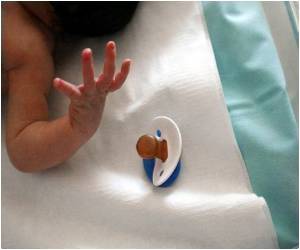Japanese research group studied infants' facial expressions and have discovered hemispheric differences in the temporal area overlying superior temporal sulcus (STS).

Near infrared spectroscopy (NIRS) is an optical imaging technique that can measure changes in the concentrations of oxyhemoglobin (oxy-Hb), deoxyhemoglobin (deoxy-Hb), and total hemoglobin (total-Hb) as an index of neural activation. Recently, NIRS has been widely used to reveal the brain activity for cognitive processing in awake infants.
Neuroimaging studies in adults have revealed that the STS is involved in the processing of facial expressions, while infants' brain regions involved in perceiving facial expressions has not been investigated.
To examine whether the STS is responsible for the perception of facial expressions in infants, the research group measured the hemodynamic responses in STS during the perceptions of happy and angry faces with NIRS.
The findings showed that (1) the hemodynamic responses elicited by the perception of happy faces increased continuously even after the happy face stimuli disappeared, whereas of the neural response to angry faces decreased much more rapidly when the presentation of angry faces ceased, and that (2) the left temporal area of infants' brain was significantly activated for happy faces, while the right temporal area was activated for angry faces.
The research group said, "the different hemodynamic responses between the perception of positive and negative expressions in infants is related to the different biological meanings of positive and negative facial expressions; a positive facial expression can convey a pleasant meaning, while a negative facial expression can be unpleasant or convey danger. The hemispheric lateralization of neural responses to facial expressions develops by the age of 6 months."
Advertisement
Source-ANI









